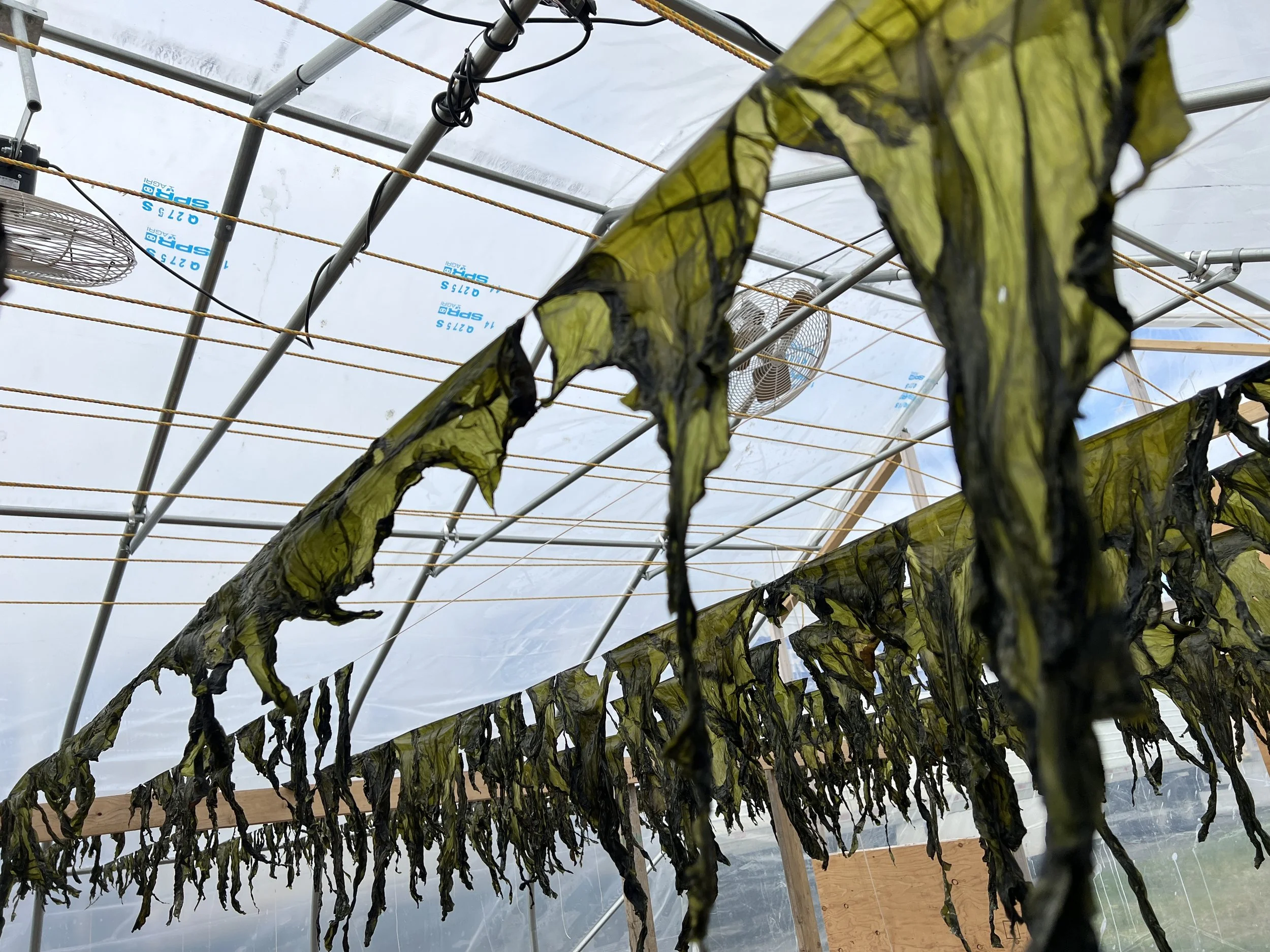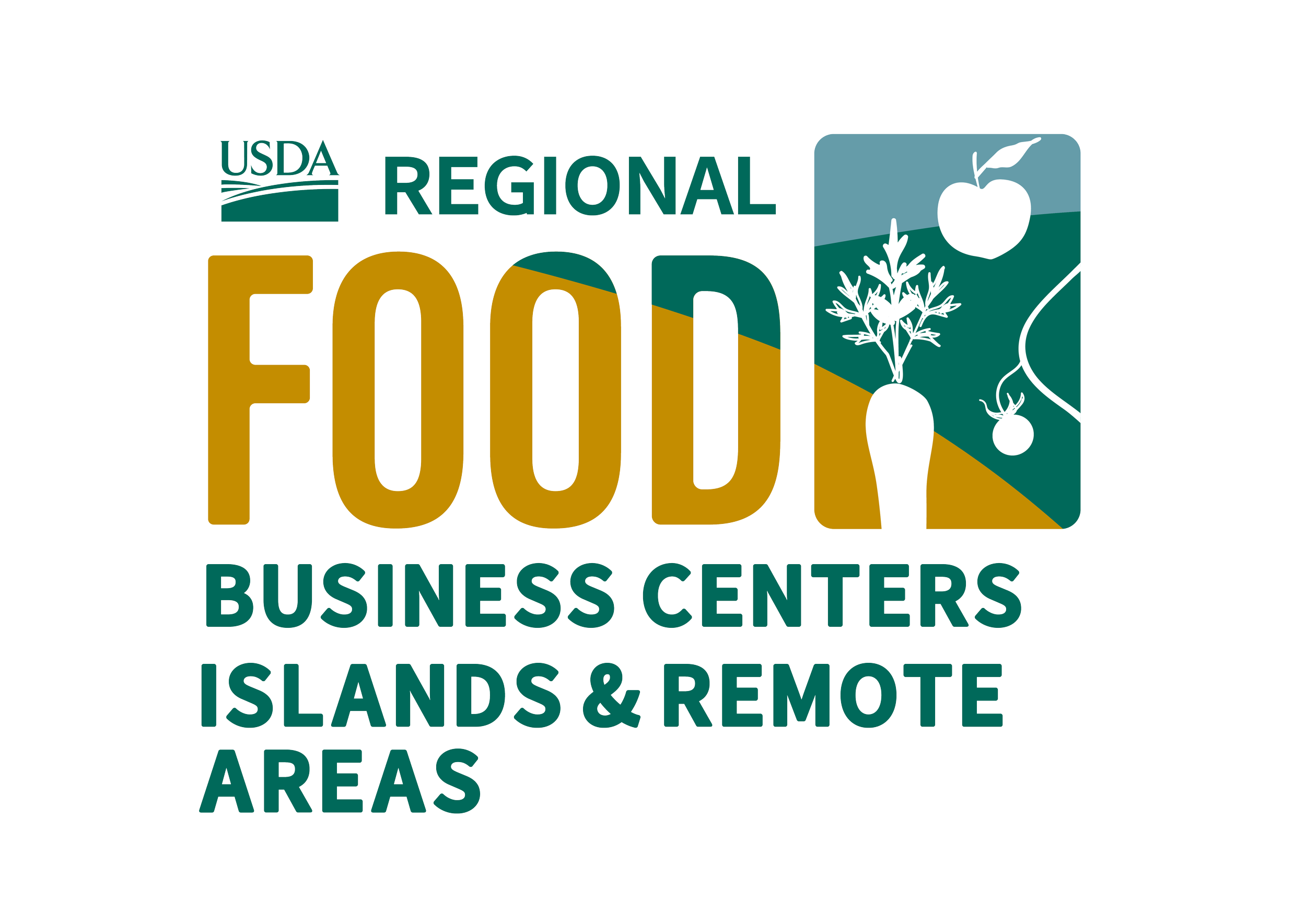What collaboration across time and place can look like
By Sundance Visser, Finance and Operations Director, AFPC
The USDA Regional Food Business Centers (RFBC) were established in July of 2023 to drive economic opportunities across their region and to create more diversified and resilient local and regional food systems. The twelve RFBCs, supporting all states and territories, will be responsible for:
Enhancing coordination between organizations, businesses, and farmers, and the USDA, to help access federal, state, and local resources and funding;
Providing technical assistance that meets the unique needs of the communities being serviced; and
Building capacity to help farmers, ranchers, and other food businesses access markets, helping to close the gaps toward success.
Alaska is part of the Islands & Remote Areas Regional Food Business Center that serves the states of Alaska and Hawai’i, as well as the Territories of Puerto Rico, Guam, US Virgin lslands, Saipan, and CNMI. Our sub-regions reach all four corners of the nation. When our monthly full steering committee calls occur, we span time zones across the globe. Meetings in Alaska and Hawai’i happen at midday, while our U.S. Virgin Island colleagues join at 5pm, with those in Guam signing on at 7 am, a day ahead of the rest of us.
“Remote” is in the name of our RFBC and “remote work” is what many of us do, but we are not working in isolation. We are working from our homes, from communities dear to our hearts. We start each steering committee meeting with the question, “Who are you bringing to this meeting today?” We bring elders, pets, children, partners, and colleagues, sometimes in our minds and sometimes waving at the Zoom screen from across the room. This keeps us grounded as we work to create a Regional Food Business Center that benefits our communities at the farthest northern, eastern, southern, and western borders of the country.
It also makes time together in person exceedingly special. Our AFPC staff welcomed partners from the Hawai’i Good Food Alliance (HGFA), Kitchen Sync Strategies, and Indirect Costs INC, to Homer, Alaska, for a week-long planning session at the end of May. As we wrap up Year One of the cooperative agreement, we are moving from planning to implementation. It is our charge to be good stewards of this USDA funding, stretching it as far as we can while being impactful.
Our guests landing in Homer. Left to right: Saleh Azizi, Colin Peacock, Harmonee Williams, and Robbi Mixon
The RFBCs across the nation have three main responsibilities: coordination, technical assistance, and capacity building. Capacity building takes the form of Business Builder (BB) Subawards, funding that will be available to farmers, producers, food hubs, and others working within our food systems, to help more local food reach viable marketplaces. Each sub-regional partner in Islands & Remote Areas RFBC is designing their Business Builder program in ways that meet place-based defined needs and challenges. HGFA presented its vision for the program and discussed what other subregions are hoping to achieve. AFPC plans to use both a competitive and non-competitive award application process, and technical assistance will be integrated into both. Stay tuned for more details!
Taking a walk on the Homer Spit with our co-collaborators.
AFPC will build upon existing work, specifically, the stakeholder-informed Statewide Food Security Action Plan (2022), the emerging Alaska Food System Network which consists of AFPC’s Working Groups and Committees, and will take into consideration the numerous Task Forces reports that have been published in recent years. It’s always helpful to get fresh eyes on our reports, and we reviewed the Action Plan, section-by-section to see where the RFBC work aligns best with the Action Plan priorities. Later this year, we will bring a similar process to each working group. AFPC is committed to expanding and amplifying the opportunities provided through the RFBC across our state.
With HGFA as the lead entity on this project, it is crucial that they understand what working in Alaska’s food system means in practice. Alaska is too large and diverse to visit in a few short days, but after a quick visit to the MatSu and road trip from Anchorage to Homer, we visited the City of Homer Port and Harbor, Kachemak Kelp demonstration project, Alaska Stems Farm, Twitter Creek Gardens, the Alaska Food Hub, and Halibut Cove, a tiny off-the-road-system art and fishing community.
















The Alaskans treated the Hawai’ians the way we know best - potluck style around a bonfire under the midnight sun, with local chicken, salmon, and vegetables. We ended the week with full hearts, happy stomachs, and a more solid roadmap of where we are going. While it is always hard to say goodbye, we continue to work together remotely, discuss overlapping challenges and solutions, and look forward to the next four years of this emerging project.
Saleh Azizi, Director of the Hawai'i Food Hub Hui; Co-Director of the Islands & Remote Areas Regional Food Business Center and Sweetie Belle, a very good chicken








